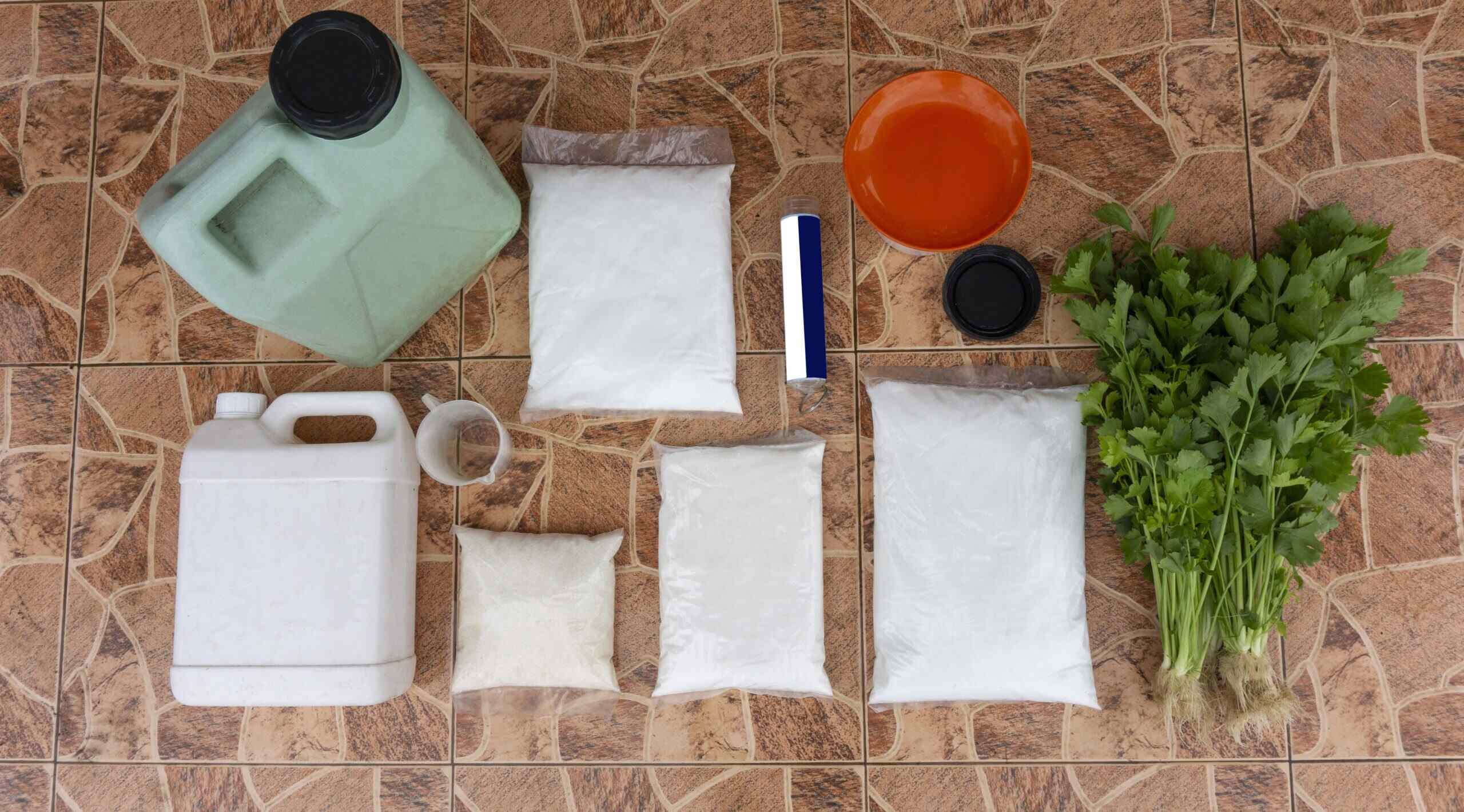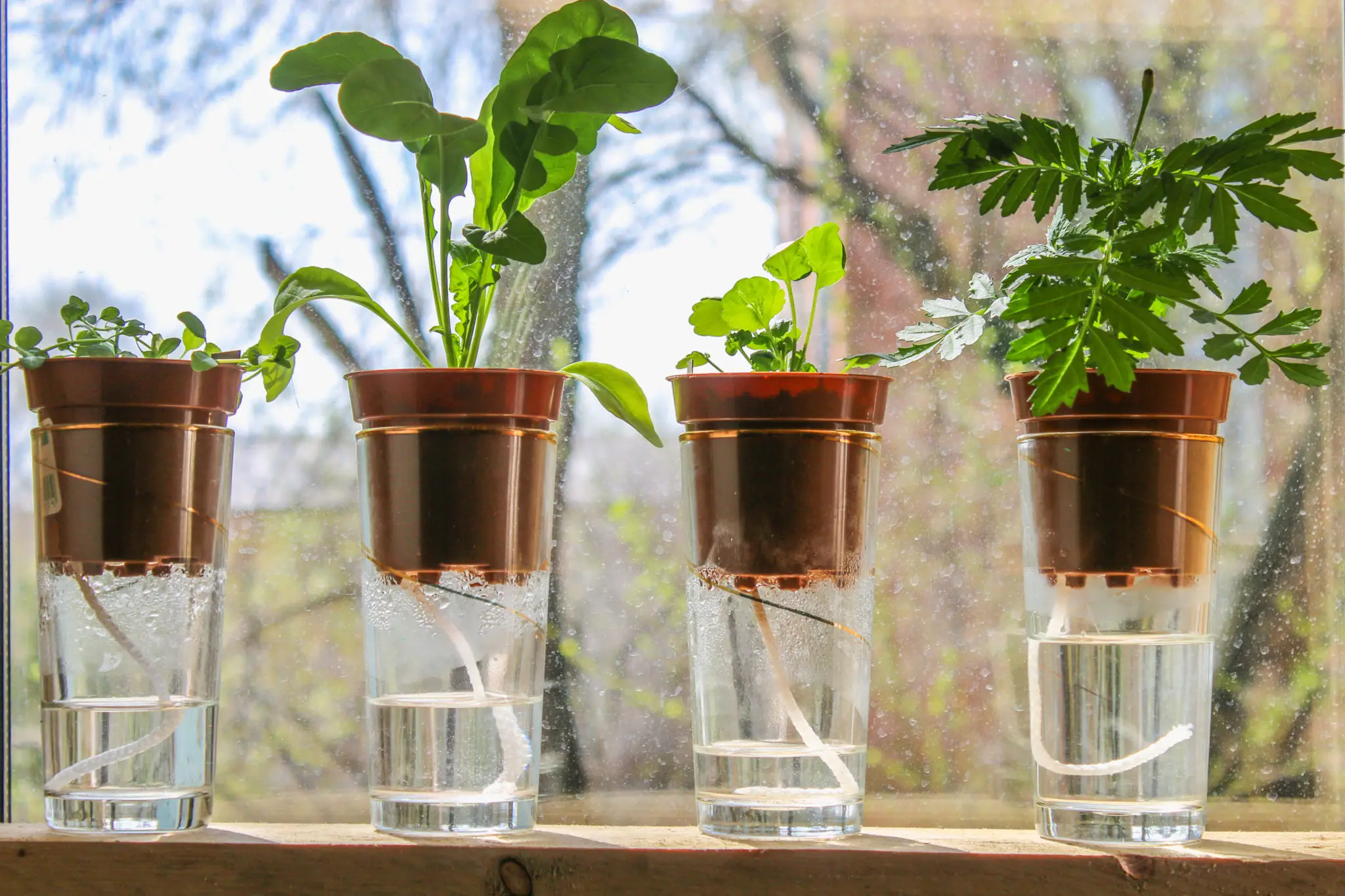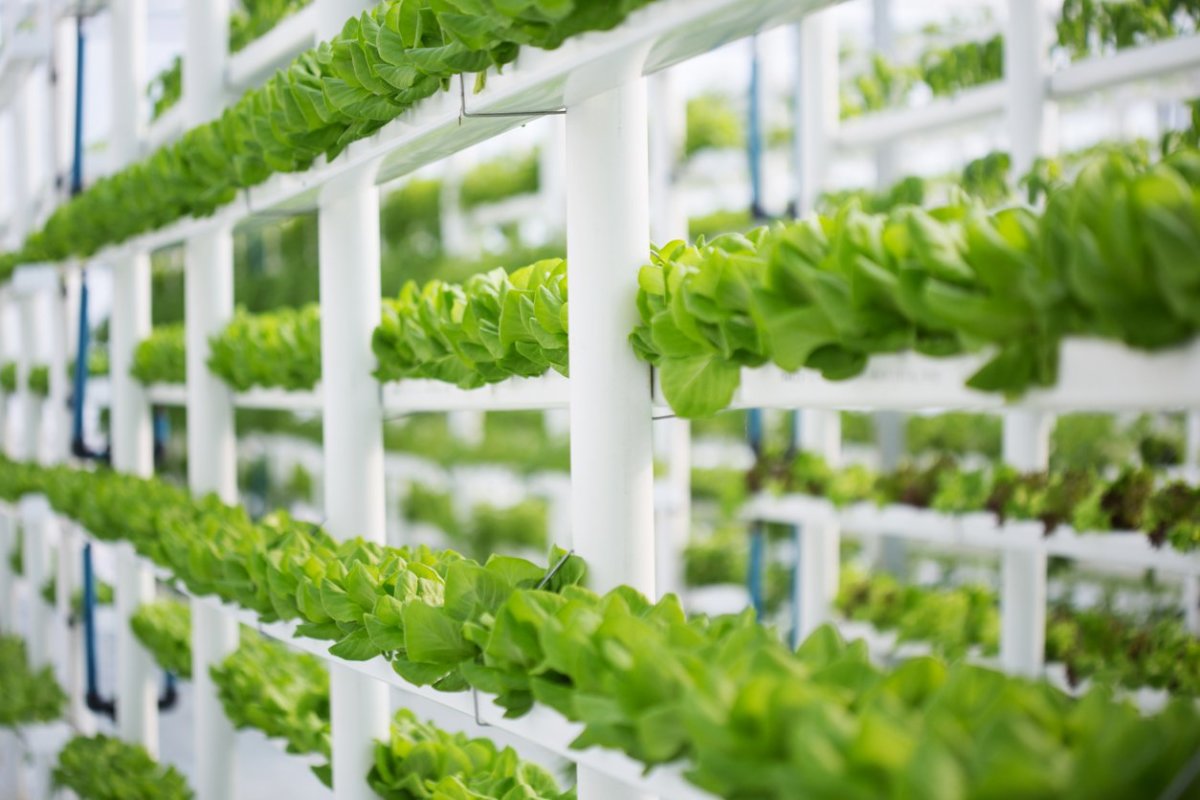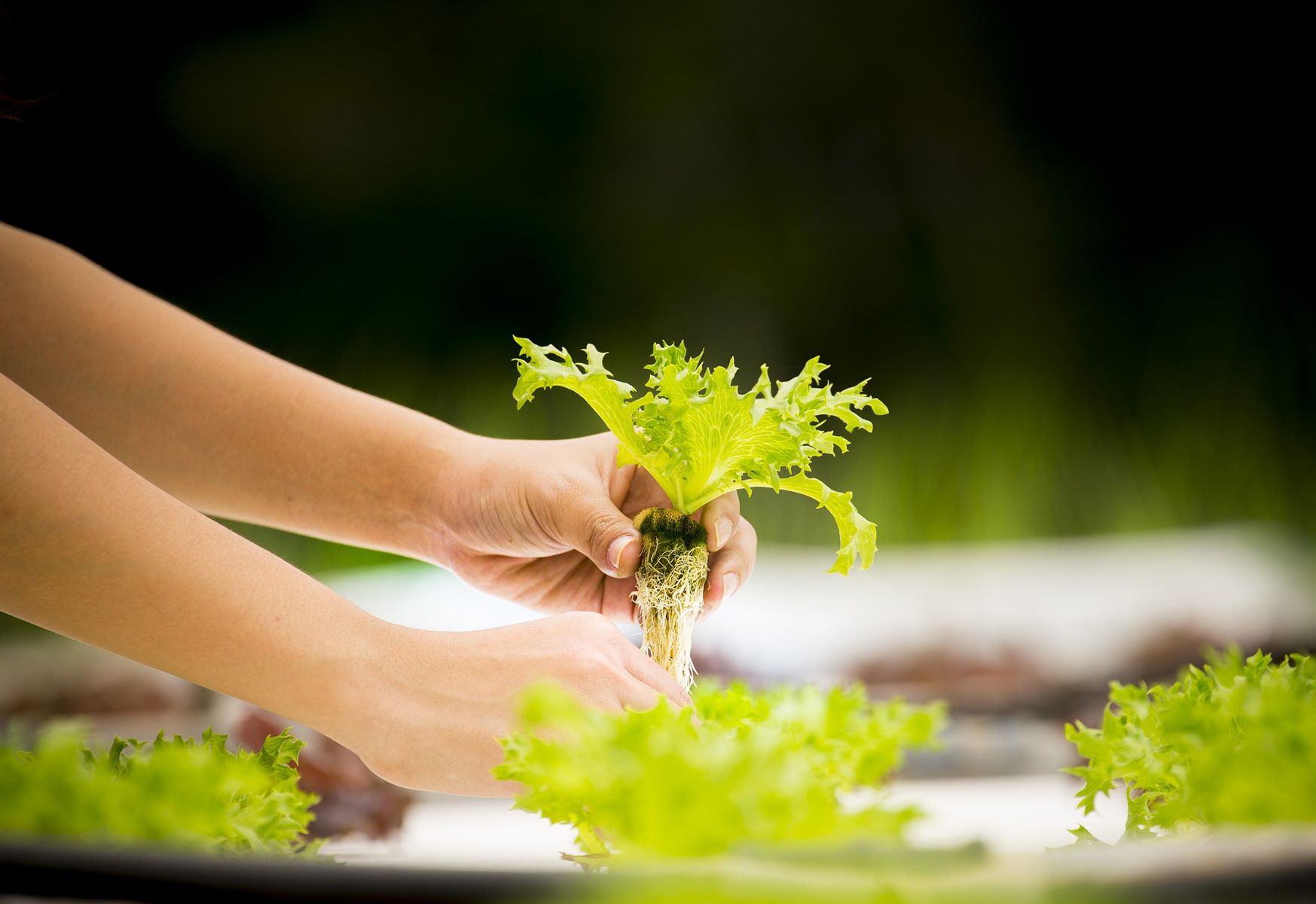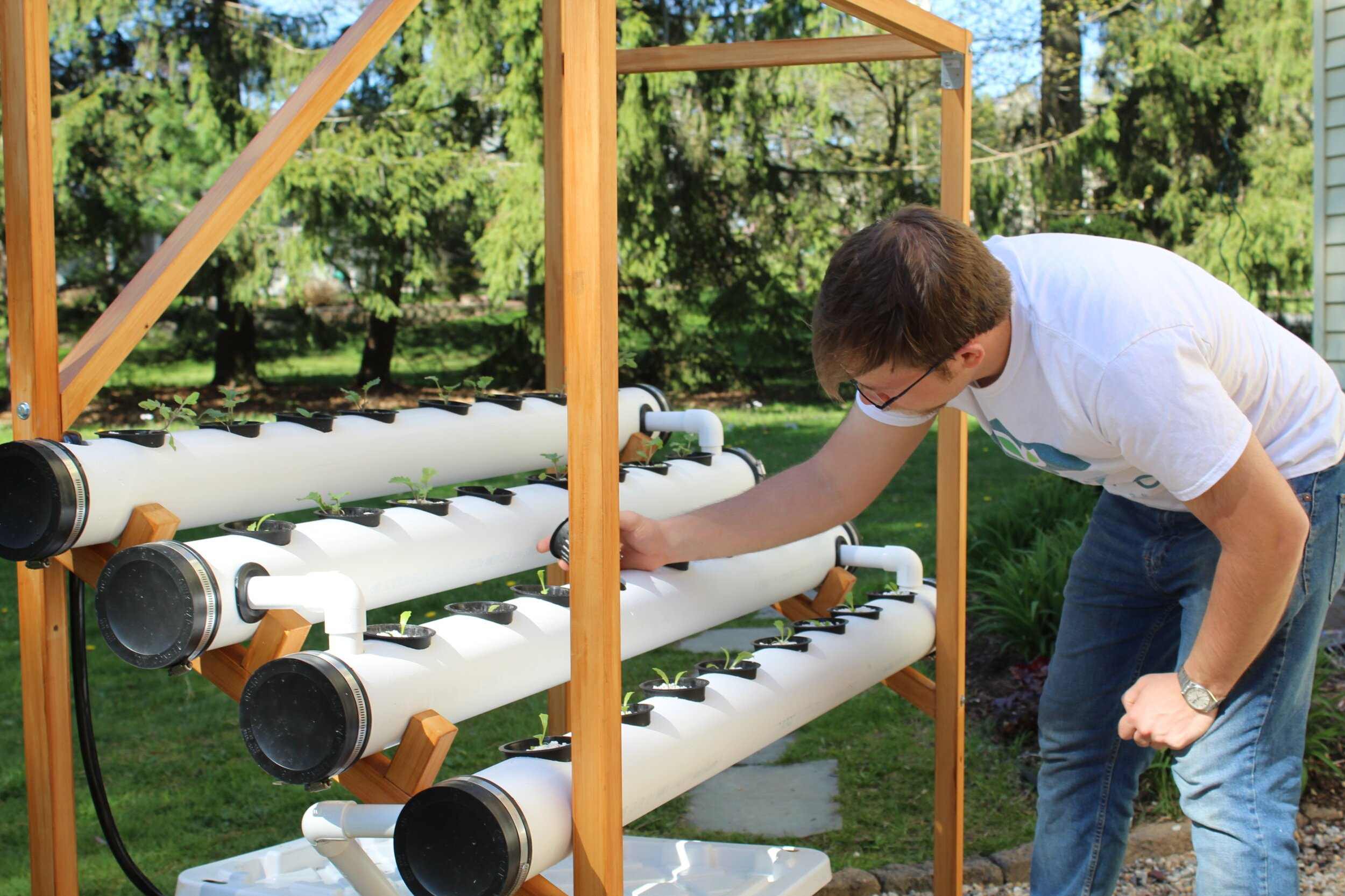Home>Gardening Tips and Tricks>Eco-Friendly Gardening>How Much Water Does Hydroponics Save
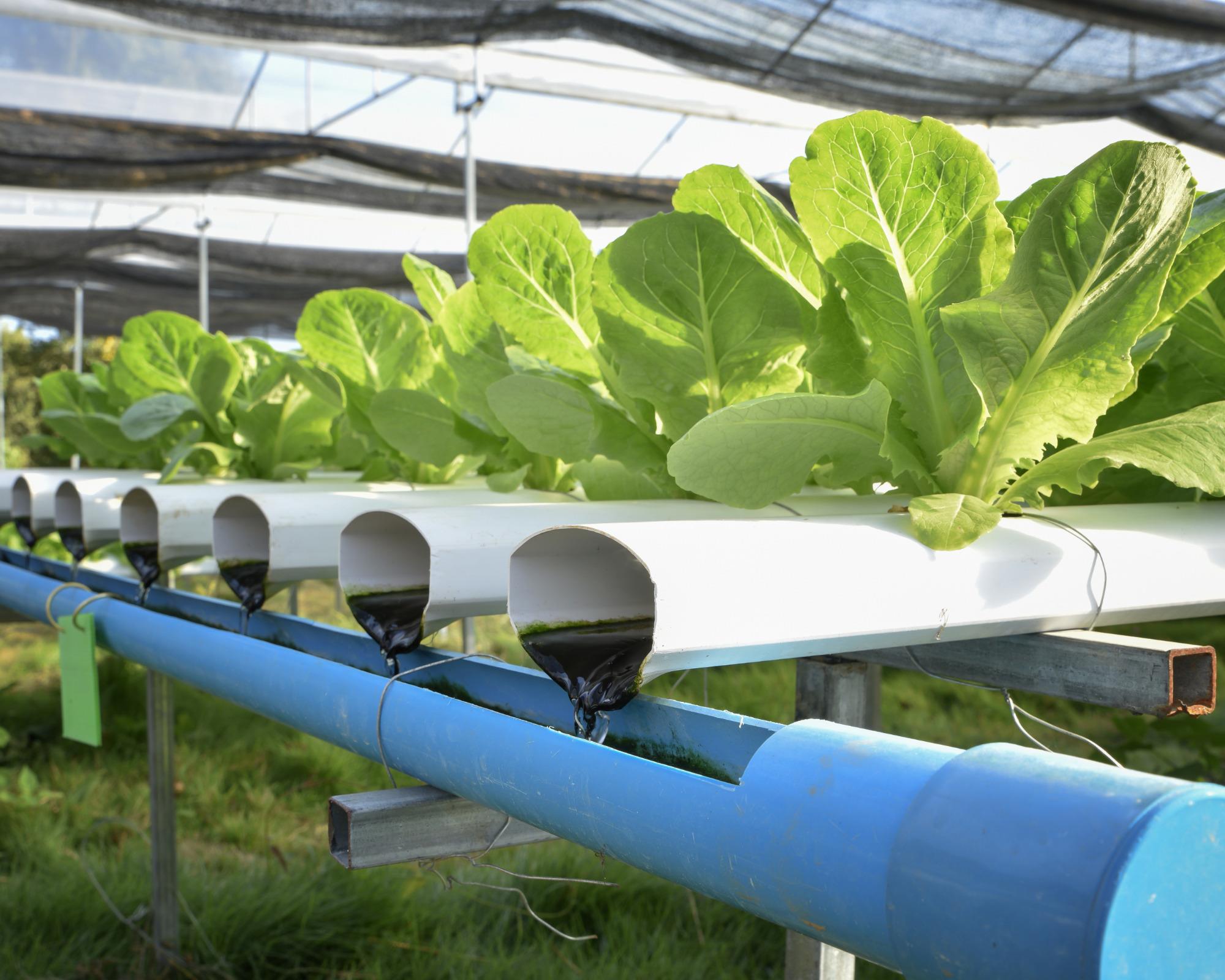

Eco-Friendly Gardening
How Much Water Does Hydroponics Save
Modified: February 10, 2024
Discover the water-saving benefits of hydroponics and how it supports eco-friendly gardening practices.
(Many of the links in this article redirect to a specific reviewed product. Your purchase of these products through affiliate links helps to generate commission for Chicagolandgardening.com, at no extra cost. Learn more)
Table of Contents
Introduction
Welcome to the world of eco-friendly gardening! With increasing concerns about climate change and environmental sustainability, eco-friendly practices are becoming more popular, and one such practice is eco-friendly gardening. In this article, we will delve into the concept of eco-friendly gardening, specifically focusing on hydroponics and its water-saving benefits.
Hydroponics is a method of growing plants without soil, using nutrient-rich water solutions instead. This innovative technique allows plants to grow faster and more efficiently, while minimizing water usage and reducing environmental impact. By understanding the water-saving potential of hydroponics, we can make more sustainable and eco-conscious choices in our gardening practices.
Traditional agriculture relies heavily on soil and large water supplies to sustain plant growth. This often leads to excessive water usage, with a significant portion being wasted through evaporation, runoff, and inefficient irrigation systems. In contrast, hydroponic systems are designed to optimize water usage and minimize wastage, making them a compelling option for eco-friendly gardeners.
In this article, we will explore the water-saving benefits of hydroponics, examine the factors that contribute to its efficiency, and discuss real-life case studies that highlight the environmental advantages of this gardening technique. By the end, you will have a clear understanding of how hydroponics can play a crucial role in conserving water and promoting sustainable gardening practices.
What is Hydroponics?
Hydroponics is an innovative method of growing plants that does not rely on traditional soil-based cultivation. Instead, it utilizes a water-based solution fortified with essential nutrients, allowing plants to obtain their required nutrients directly from the water. The word “hydroponics” comes from the Greek words “hydro” meaning water, and “ponos” meaning labor or work.
This alternative growing method harnesses the power of technology and science to create an optimal environment for plant growth. The plants are typically placed in a grow medium such as perlite, coconut coir, or Rockwool, which provides support for the roots while allowing them to access the nutrient-rich water solution.
Hydroponics offers several advantages over traditional soil-based gardening. Firstly, it eliminates the need for soil, making it possible to grow plants in environments where fertile soil is scarce or contaminated. This opens up opportunities for urban farming, rooftop gardens, and even space agriculture.
Secondly, hydroponics enables growers to have precise control over the nutrients delivered to the plants. By adjusting the nutrient solution’s composition, pH levels, and timing of delivery, gardeners can optimize plant growth and tailor it to specific plant species’ requirements. This level of control minimizes nutrient waste and ensures plants receive an optimal balance of nutrients for their growth.
Furthermore, hydroponic systems use significantly less water compared to traditional soil-based methods. In soil, plants often access only a portion of the water applied through irrigation, while the rest becomes lost through evaporation or runoff. In hydroponics, water is recirculated through the system, minimizing waste and increasing water-use efficiency.
Overall, hydroponics is a sustainable and eco-friendly gardening technique that offers numerous benefits. By using water efficiently, providing optimal nutrient delivery, and flexibility in location, hydroponics is revolutionizing the way we grow plants and paving the way for a greener, more sustainable future.
Water Usage in Traditional Agriculture
Traditional agriculture heavily relies on soil as a growing medium and requires significant amounts of water for plant growth. In many conventional farming practices, water is applied to the soil through irrigation systems, with a portion absorbed by the plants’ roots and the rest lost to evaporation, runoff, and deep percolation.
This conventional approach to agriculture often results in inefficient water usage and significant water wastage. Factors such as inefficient irrigation systems, improper timing of watering, and excessive use of water contribute to the high water consumption in traditional farming.
One of the primary causes of water waste in traditional agriculture is inefficient irrigation systems, such as flood irrigation or overhead sprinklers. In these methods, large amounts of water are applied to the entire field, leading to water loss due to runoff and evaporation. Additionally, uneven distribution of water can result in areas of overwatering and areas where crops do not receive adequate water.
Another factor contributing to water waste is improper timing of watering. Many farmers irrigate during the daytime when temperatures are high, leading to increased evaporation and water loss. Additionally, watering during periods of high humidity or windy conditions can also result in water loss through evaporation.
Furthermore, traditional agriculture often relies on excessive water usage to compensate for poor soil quality, which can lead to water runoff and loss. Inadequate soil management practices, such as poor drainage or compacted soil, can hinder water infiltration and lead to waterlogged conditions or runoff.
The inefficient water usage in traditional agriculture poses various challenges, especially in regions experiencing water scarcity or facing drought conditions. The excessive water consumption can strain water resources, deplete aquifers, and contribute to water shortages.
Given these challenges, it is essential to explore alternative methods of growing plants that conserve water and reduce water wastage. Hydroponics, with its precise nutrient delivery and efficient water usage, offers a sustainable solution to address these water-related issues in traditional agriculture.
Water Usage in Hydroponics
Hydroponics revolutionizes water usage in gardening by implementing efficient techniques that minimize water waste and optimize plant growth. Unlike traditional agriculture, where water is typically applied to the soil and lost through evaporation and runoff, hydroponic systems provide plants with direct access to water and nutrients, resulting in significant water savings.
One of the key advantages of hydroponics is its ability to recirculate water through the system. Instead of constantly applying new water to the plants, hydroponic systems capture and reuse the water, reducing overall water consumption. This recirculation method ensures that plants receive an appropriate amount of water while minimizing wastage and enhancing water-use efficiency.
In hydroponic systems, water is typically delivered through drip irrigation or nutrient film technique (NFT), where water flows in a thin film over the plant roots. These delivery methods allow for precise and controlled water application directly to the plant roots, reducing water loss through evaporation and runoff.
The ability to deliver a specific amount of water to each plant in a hydroponic system is another factor contributing to water savings. By tailoring the water supply to the individual needs of each plant, hydroponics eliminates overwatering and ensures efficient water utilization. This targeted approach significantly reduces water waste compared to traditional agricultural practices.
Additionally, hydroponic systems provide a favorable environment for plants, allowing them to take up water more efficiently. In soil-based agriculture, plants need to exert more energy to extract water from the soil, whereas in hydroponics, water is readily available to the roots, enabling plants to utilize it more effectively.
Furthermore, hydroponic systems can employ techniques such as fogponics or aeroponics, which involve the use of a fine mist or suspended nutrient solution to provide water and nutrients to the plants. These methods further minimize water usage by using droplets or mist, resulting in greater water savings.
The efficient water usage in hydroponics not only conserves water resources but also provides benefits such as faster plant growth and higher yields. By ensuring that plants receive an optimal water supply, hydroponics creates an ideal growing environment, allowing for healthier and more productive plants.
Overall, hydroponics stands out as an eco-friendly gardening method that significantly reduces water consumption through its water-recirculation system, targeted water delivery, and improved water utilization. This sustainable approach to water usage makes hydroponics an attractive choice for environmentally-conscious gardeners seeking to minimize water waste and promote more efficient plant growth.
Factors Affecting Water Savings in Hydroponics
Several factors influence the water-saving potential of hydroponic systems. By understanding these factors and optimizing them, gardeners can maximize water savings and enhance the efficiency of their hydroponic setups.
1. System Design: The design of the hydroponic system plays a crucial role in water usage. Factors such as the type of system (e.g., NFT, drip irrigation, or aeroponics), the arrangement of plants, and the use of proper water reservoirs and delivery mechanisms can significantly impact water efficiency. Well-designed systems ensure that water is delivered directly to the plants’ roots, minimizing water loss through evaporation or runoff.
2. Nutrient Solution Management: The management of the nutrient solution in hydroponic systems is essential for water conservation. Proper monitoring and adjustment of the nutrient solution’s pH levels, nutrient concentrations, and temperature can optimize nutrient uptake by plants and reduce the need for excessive water usage.
3. Evaporation Control: Controlling evaporation within the hydroponic system is crucial for reducing water waste. Implementing measures such as covering the nutrient reservoir, using humidity control devices, or employing closed-loop systems can minimize water loss due to evaporation, ensuring that water is utilized efficiently by the plants.
4. Transpiration Management: Transpiration, the process by which plants release moisture through their leaves, impacts the water usage in hydroponics. Optimizing environmental factors such as temperature, humidity, and airflow can help regulate plant transpiration, reducing water loss and improving water-use efficiency.
5. Irrigation Timing and Frequency: Proper timing and frequency of irrigation can significantly affect water savings. Automating irrigation systems and using sensors to monitor moisture levels in the growing medium can ensure that plants receive the right amount of water when needed, minimizing water waste and preventing overwatering.
6. Plant Selection and Cultivation Practices: Choosing plant varieties that are well-suited to hydroponic systems and employing proper cultivation practices can enhance water savings. Selecting plants with lower water requirements and implementing techniques such as proper pruning, spacing, and plant training can optimize water usage within the hydroponic system.
7. Education and Experience: Knowledge and experience in hydroponic gardening are essential for maximizing water savings. Learning about the principles of hydroponics, staying updated on the latest techniques and technologies, and continually evaluating and adjusting the system based on experience can contribute to more efficient water usage and improved overall performance.
By considering and implementing these factors in hydroponic gardening, enthusiasts can significantly reduce water consumption and promote sustainability. With careful attention to system design, nutrient management, evaporation control, transpiration management, irrigation timing, plant selection, and continuous education, water savings in hydroponics can be optimized.
Case Studies: Water Savings in Hydroponic Systems
Real-life case studies demonstrate the significant water-saving potential of hydroponic systems compared to traditional agriculture. These examples highlight the effectiveness of hydroponics in conserving water while maintaining optimal plant growth.
1. Sky Greens Vertical Farm, Singapore: Sky Greens, a vertical farm in Singapore, utilizes a hydroponic system to grow vegetables in a vertically stacked configuration. This innovative approach maximizes space utilization and water efficiency. By recirculating water through the system and using a closed-loop irrigation method, Sky Greens reduces water consumption by up to 95% compared to traditional soil-based farming methods.
2. Grönska Urban Farming, Sweden: Grönska Urban Farming is a hydroponic farm located in Stockholm, Sweden. Through their vertical farming system, Grönska produces leafy greens and herbs using a fraction of the water required for soil-based agriculture. By carefully monitoring and adjusting their hydroponic systems, they achieve water savings of around 90% compared to traditional farming methods.
3. Vertical Harvest, Wyoming, USA: Vertical Harvest is a vertical hydroponic farm in Wyoming that grows a variety of crops using a hydroponic system. By recirculating water and employing advanced water-saving techniques such as nutrient film technique (NFT), they reduce water usage by approximately 95% compared to conventional soil-based farming. This impressive water-saving capability allows their farm to thrive in an arid region with limited water resources.
4. ECF Farmsystems, Germany: ECF Farmsystems is a hydroponic farm located in Berlin, Germany. They utilize aquaponics, a combination of hydroponics and aquaculture, to grow plants alongside fish. The fish waste provides nutrients for the plants, which in turn purify the water for the fish. This closed-loop system significantly reduces water consumption compared to traditional farming methods, as the water is continuously recycled.
These case studies demonstrate the remarkable water-saving benefits of hydroponic systems in various geographical locations. By implementing efficient water recirculation, precise nutrient delivery, and advanced irrigation techniques, hydroponics allows for significant water savings, making it a sustainable and eco-friendly alternative to traditional agriculture.
Environmental Benefits of Hydroponics
Hydroponics offers several environmental benefits that contribute to a more sustainable and eco-friendly approach to gardening and food production. These benefits make hydroponics a popular choice among environmentally-conscious individuals and organizations. Let’s explore some of the key environmental advantages of hydroponic systems.
1. Water Conservation: Hydroponics is known for its efficient water usage. By recirculating water, minimizing evaporation, and delivering nutrients directly to plant roots, hydroponic systems can reduce water consumption by up to 90% compared to traditional soil-based agriculture. This significant water savings is especially crucial in regions facing water scarcity or drought conditions.
2. Reduced Soil Erosion and Degradation: Traditional agriculture practices often lead to soil erosion and depletion, as well as degradation of soil quality due to the excessive use of chemical fertilizers. Hydroponics eliminates the need for soil, preventing soil erosion and degradation. Furthermore, in hydroponic systems, the precise delivery of nutrients to the plants ensures that there is no nutrient runoff, minimizing pollution and soil contamination.
3. Efficient Use of Space: Hydroponic systems can be set up in various indoor and urban environments, even in areas with limited space. Vertical farming, in particular, allows for the vertical stacking of plants, maximizing space utilization. This efficient use of space reduces the need for deforestation and land clearing for agricultural purposes, preserving natural habitats and biodiversity.
4. Pesticide Reduction: Hydroponic systems provide a controlled, pesticide-free environment for plants. The absence of soil significantly reduces the risk of soil-borne pests and diseases. Furthermore, the enclosed environment of hydroponics minimizes the need for pesticides, herbicides, and fungicides, promoting healthier and chemical-free produce.
5. Energy Efficiency: Although hydroponic systems require energy for lighting, water pumps, and climate control, they can still be more energy-efficient compared to traditional agriculture. This is particularly true when utilizing energy-efficient technologies such as LED grow lights and optimizing energy usage through automation and smart control systems.
6. Year-round Food Production: Hydroponics enables year-round food production, regardless of climate or seasonal limitations. By growing crops indoors or in climate-controlled environments, hydroponics eliminates the need for transportation of perishable food items over long distances. This reduces the carbon emissions associated with food transportation and helps to support local and sustainable food production.
Hydroponics presents a greener and more sustainable approach to gardening and food production. Through water conservation, reduced soil erosion, efficient space utilization, pesticide reduction, energy efficiency, and year-round food production capabilities, hydroponics contributes to a healthier planet and more environmentally-friendly practices.
Conclusion
Hydroponics offers a sustainable and eco-friendly solution to gardening and agriculture. By ditching traditional soil-based cultivation and utilizing water-efficient systems, hydroponics significantly reduces water consumption, conserves resources, and minimizes environmental impact.
Through the efficient recirculation of water, precise nutrient delivery, and advanced irrigation techniques, hydroponic systems can achieve remarkable water savings, often exceeding 90% compared to traditional farming methods. This water conservation is essential in regions experiencing water scarcity or facing drought conditions, helping to preserve precious water resources.
Moreover, hydroponics eliminates soil erosion and degradation, reduces the need for pesticides, maximizes space utilization through vertical farming, and enables year-round food production regardless of climatic limitations. These environmental benefits contribute to a greener and more sustainable approach to gardening and food production.
By adopting hydroponics, individuals, communities, and even large-scale farming operations can make a positive impact on the environment. Hydroponics allows for resource-efficient farming, reducing the use of water, land, and chemicals, while still producing high-quality and nutritious crops.
As the demand for sustainable and eco-friendly practices increases, hydroponics emerges as an innovative solution to the challenges faced by traditional agriculture. Its ability to grow plants efficiently, reduce water consumption, and minimize environmental impact positions hydroponics as a promising avenue for the future of food production.
So, whether you are an aspiring gardener looking for an eco-friendly hobby or a farmer seeking ways to enhance sustainability, consider embracing hydroponics. By exploring the various hydroponic techniques, optimizing water and nutrient management, and continuously educating yourself on best practices, you can contribute towards a greener and more sustainable world.
Embrace the power of hydroponics and join the growing movement towards eco-friendly gardening. Let’s work together to cultivate a more sustainable future for generations to come.

